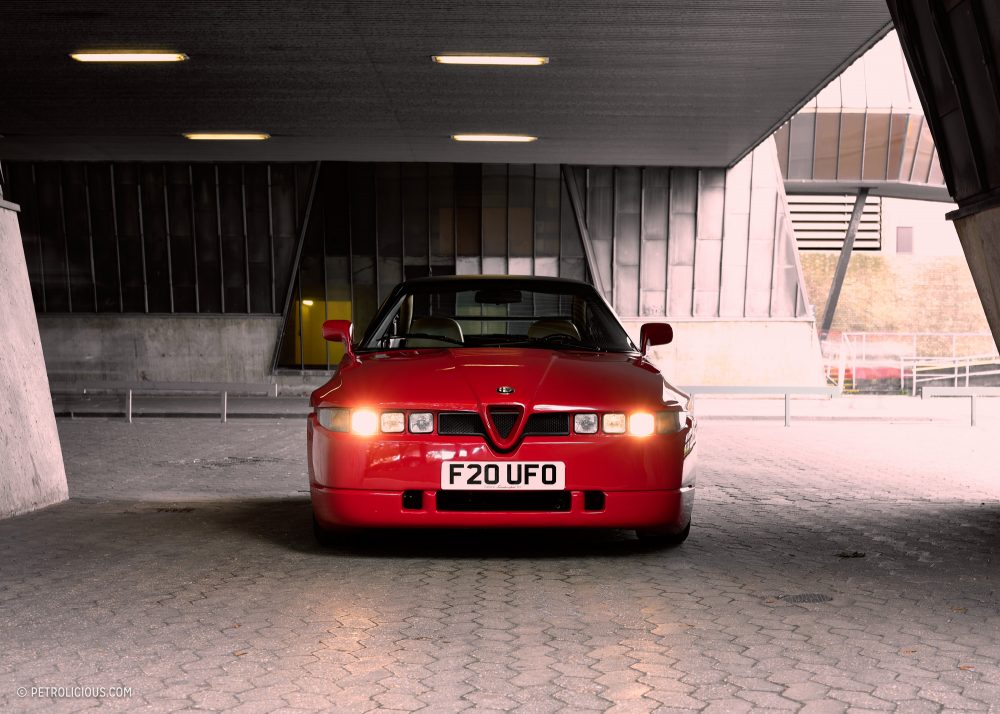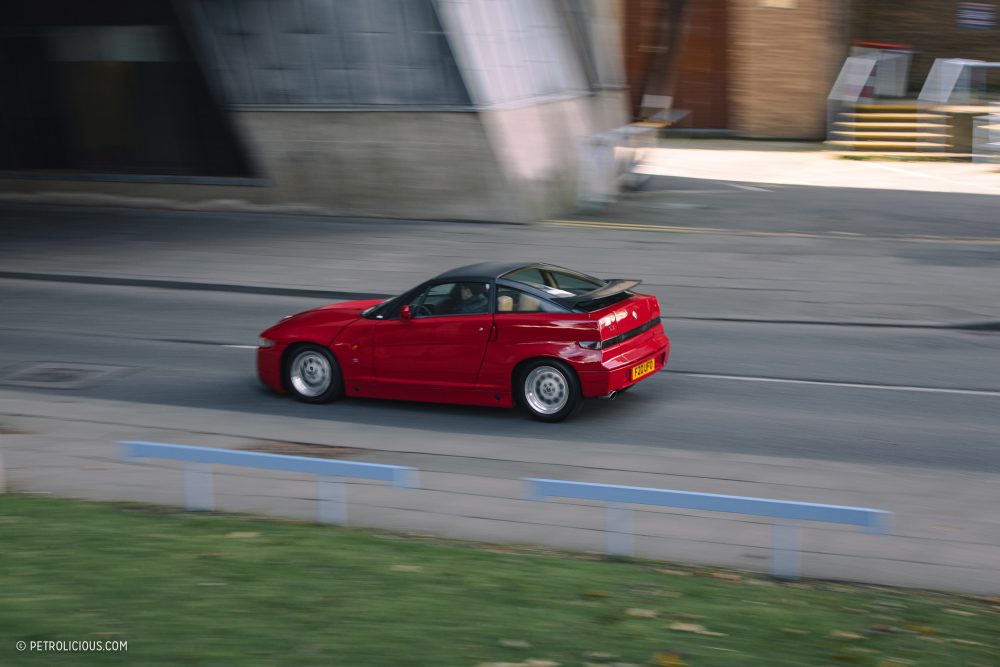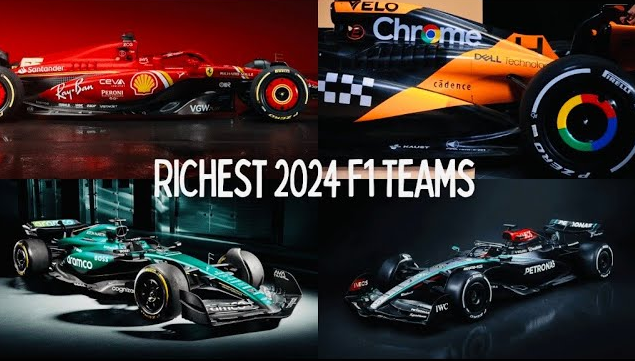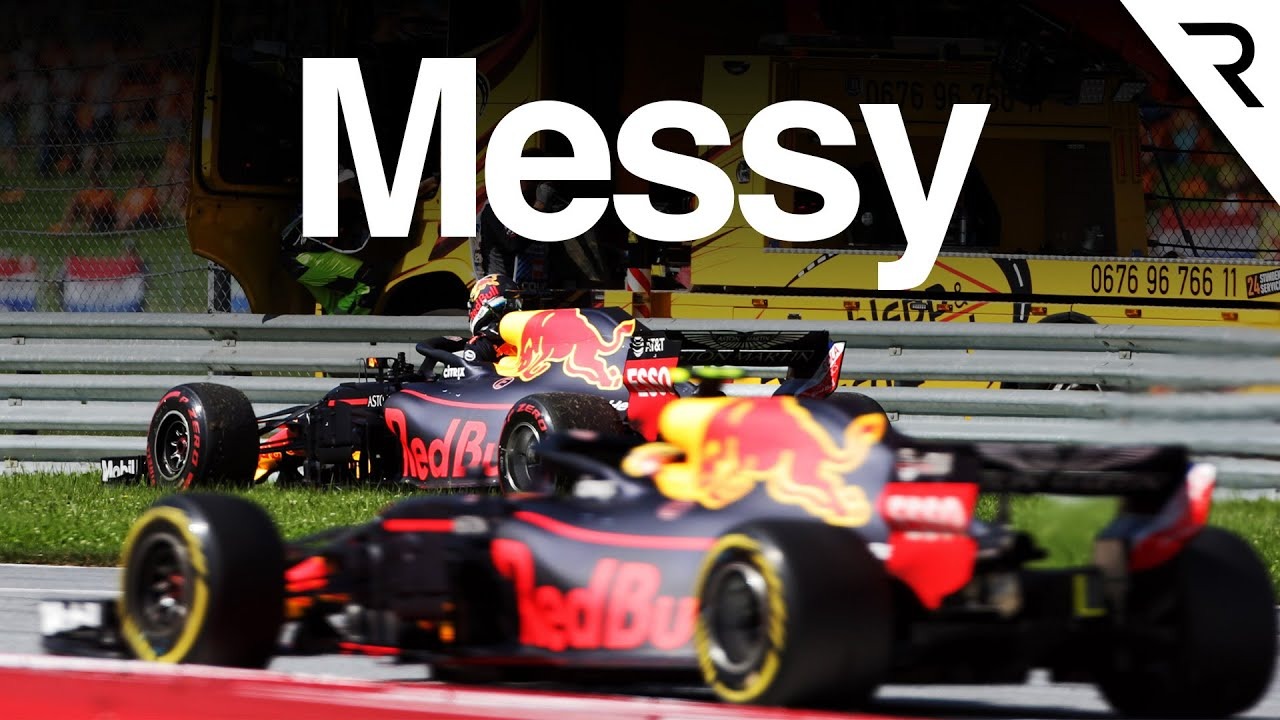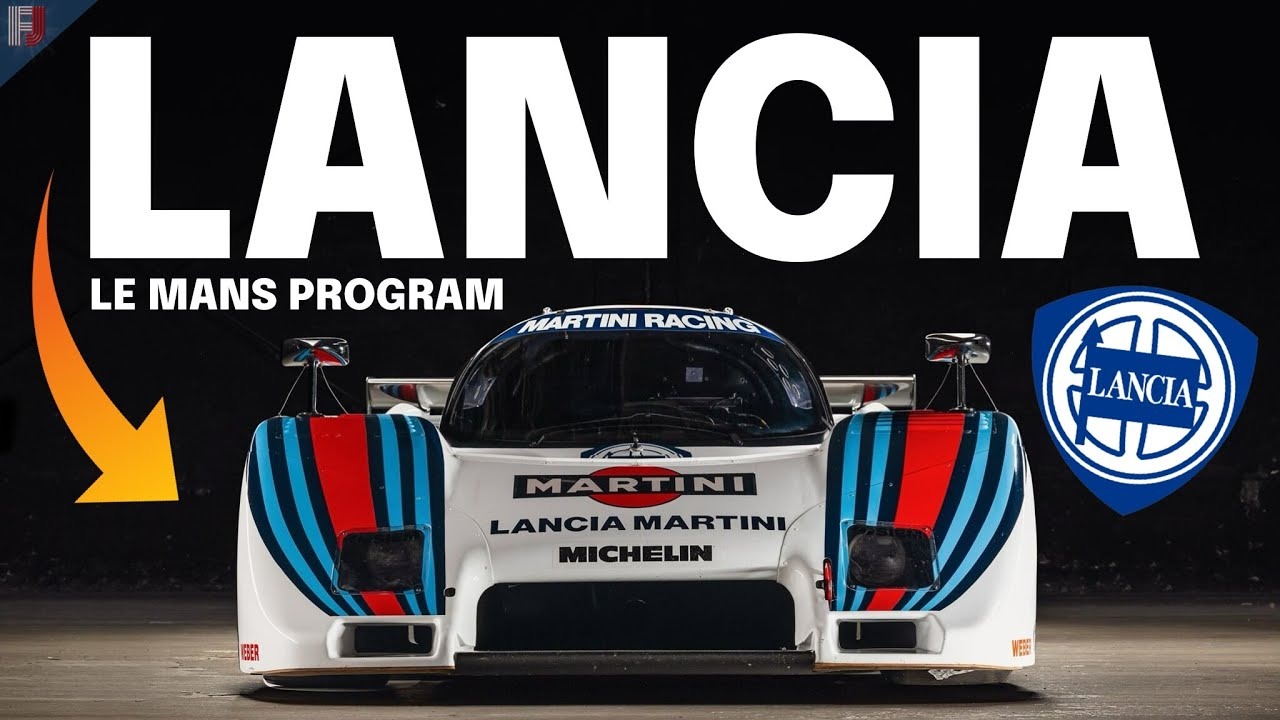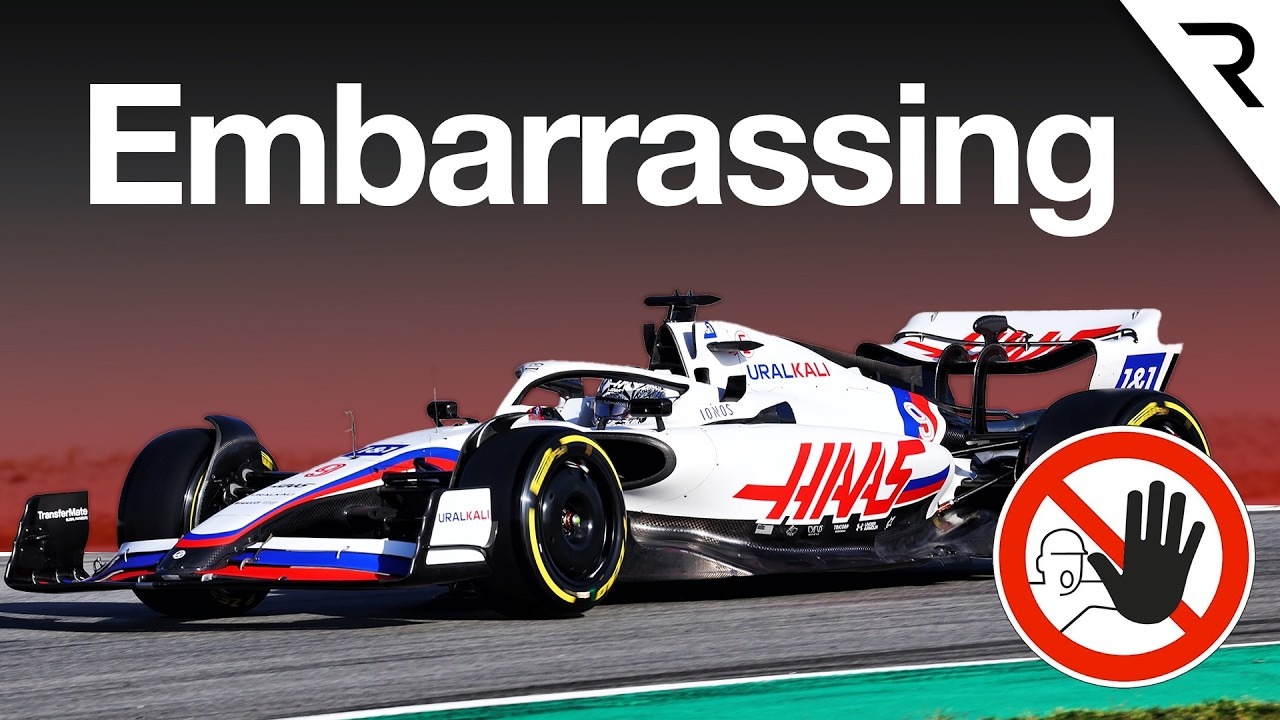A year after Fiat acquired Alfa Romeo in 1986, the Alfa Romeo SZ concept was shown to the public. The SZ (for Sprint Zagato) was the first sports car developed under Alfa Romeo’s new owner, but some of its underpinnings can be traced all the way back to the 1970s when its first iterations were used as the platform for the Alfetta. And, as the SZ name suggests, the car was intended to update the essence of the Giulietta Sprint Zagato from the late ‘50s and early ’60s. Avant garde to this day, but not without a toe or two in history.
The end result in production form was about as “concept” as cars come, and is arguably one of the most challenging pieces of design to wear the badge with the man-eating serpent. A run of only 1,036 SZs were produced (in addition to 278 roadster, or RZ, versions), making them very rare in addition to utterly unique to look at.

 There are many cars that are held up as examples of timeless design—the E-Types and 911s of the world, cars with almost universal aesthetic appeal—but the polarizing examples have always been more enjoyable to come across. How many double-takes does your garden variety, traditionally good-looking sports car garner?
There are many cars that are held up as examples of timeless design—the E-Types and 911s of the world, cars with almost universal aesthetic appeal—but the polarizing examples have always been more enjoyable to come across. How many double-takes does your garden variety, traditionally good-looking sports car garner?
From first sight, the SZ makes an indelible impact. Some fall for its odd blend of curves and lines, some are repulsed, and it seems to grow on very few of that latter group. I just think they haven’t spent enough time around one. I recently had the chance to hang out for an afternoon with this fantastic example and its owner, Jonathan Aucott of Avantgarde Classics, and found myself becoming only more intrigued by the form and context of this arguably bizarre modern classic.
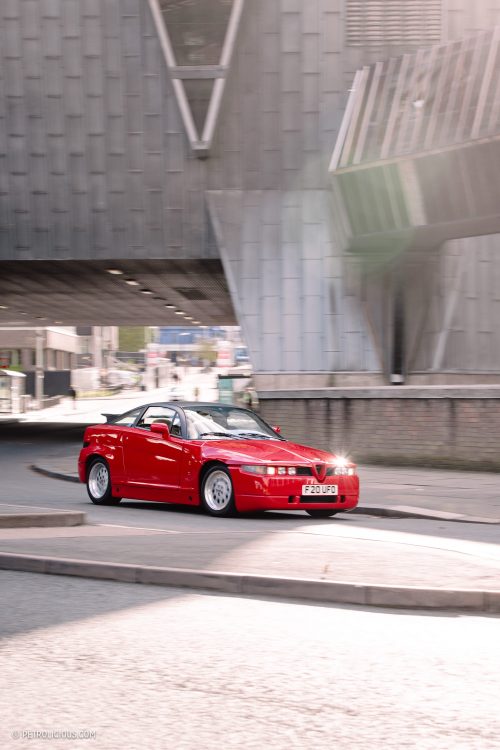


Everything from the silhouette of the car to the more specific bits of the design take some getting used to. The boxy, straight lines of the exterior are largely made up of unique thermoplastic injection-moulded composite body panels—this was one of the first production sports cars partially developed in CAD—which helped the SZ achieve a relatively low curb weight of 1260kg. The doors and side panels create a very high belt line that inform the front and rear end styling—the lights especially so.
The SZ is of course not the first car to with squared-off bodywork—the Maserati Biturbo and the William Towns’ Aston Martin Lagonda are notable forebears in that sense—but the Alfa’s styling is more balanced than any of these, at once more and less cartoonish. And the extremely short wheelbase and minimal overhang are backed up by the car’s impressive go-kart-esque roadholding abilities.


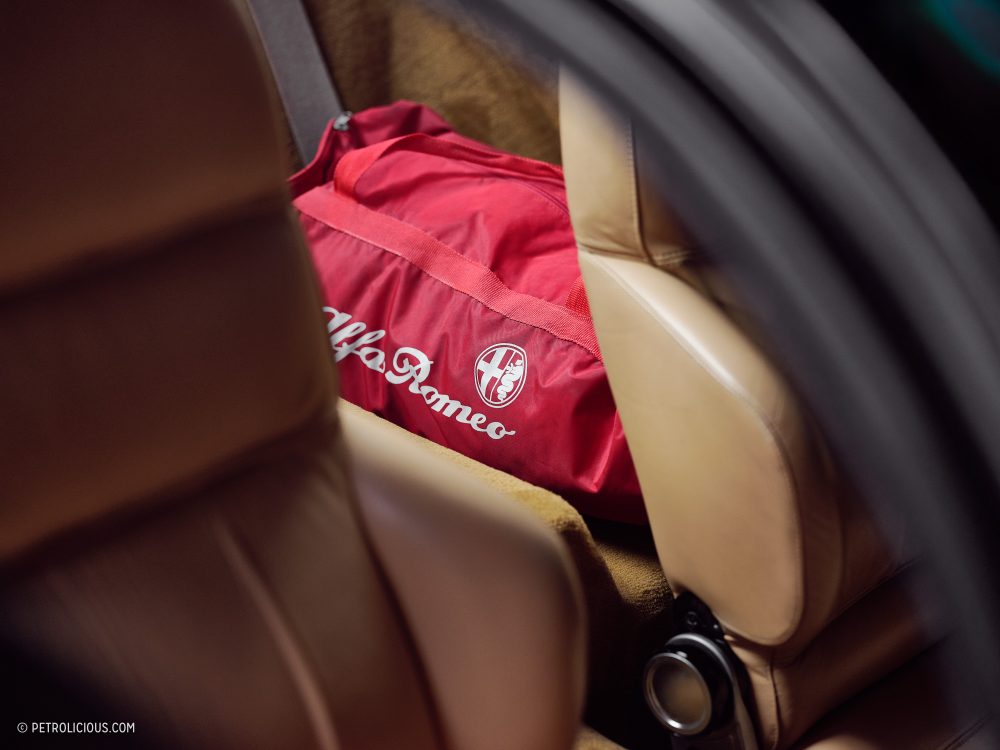
Looking back at the design context in which this car was born, the shift from the ’80s into the ’90s is clear. The harder edges of the ‘80s are softened and complemented by the type of organically curved roofline that would be adopted by the following decade’s vehicles, sporting or otherwise. You can take slices of the SZ and use them to illustrate prime examples of both decades’ design languages, yet somehow it gels together as a whole as well.
At the time of this car’s production, Dynasty was on the television and power dressing and shoulder pads were lauded without irony. Look again at the SZ and you may be able to spot the same set of influences underpinning the shape. And yet at the same time, people began to shop at Ikea and pared-down Scandinavian design became desirable—the boot of the SZ contains just the spare wheel, and you’ll need an Ikea-style instruction sheet to get it out.
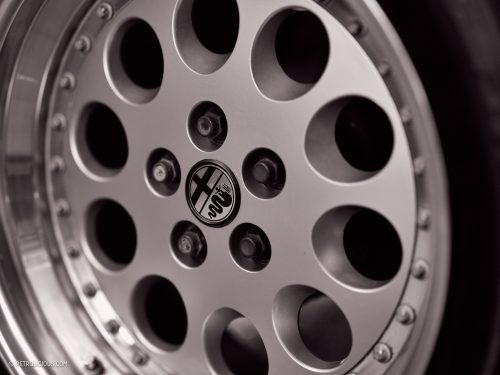
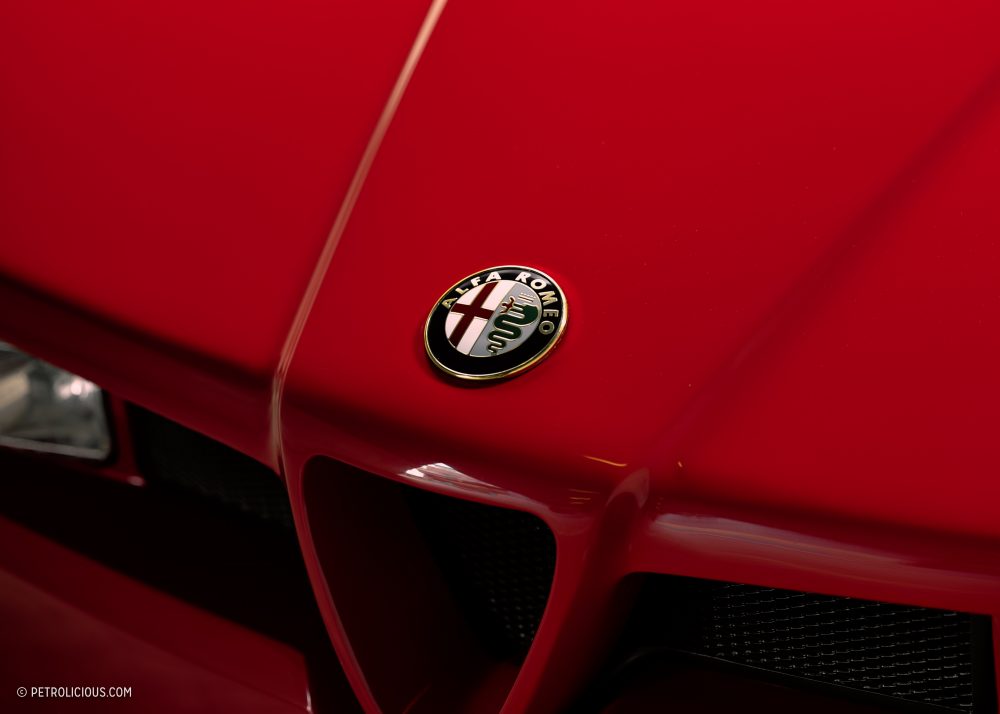
Once you accept the SZ as its own entity, outside of the context of other more familiar design cues of today (or yesterday for that matter), it becomes harder to hate it. It’s uncompromising, severe in its own way, and although it flies in the face of the traditional beauty Italy is rightfully lauded for, it embodies the same confidence and gusto.

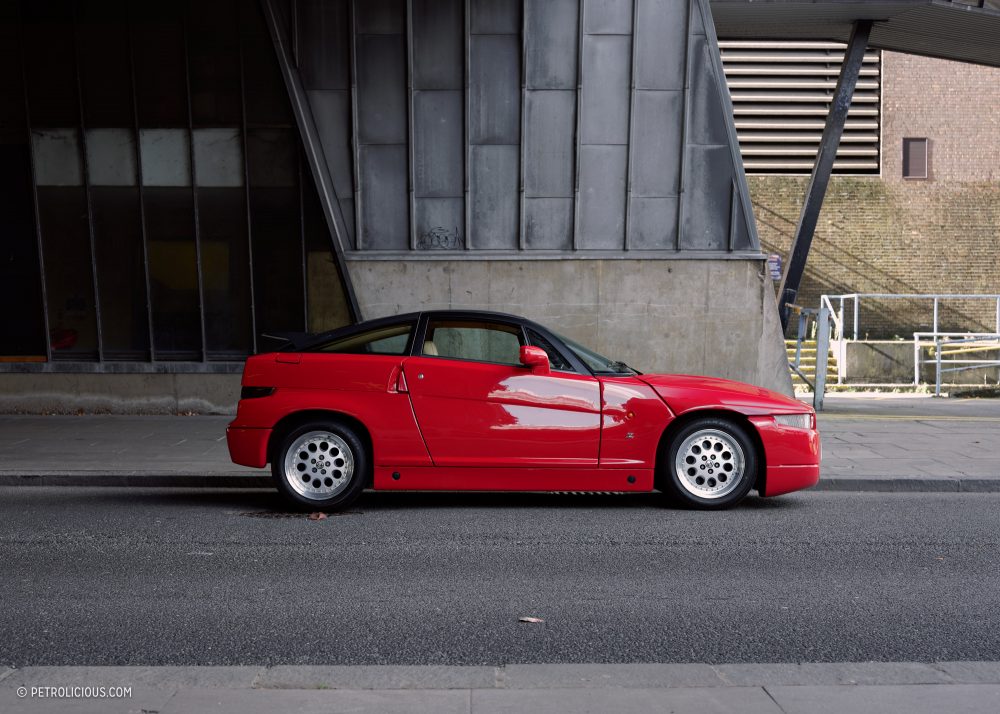
Though it’s a long ways from its country of origin, photographing the SZ outside the Elephant Building in Coventry seemed only natural. It is a brutalist building, very much of its time and symbolic of an architectural style that regularly divides opinion. It’s a dramatic backdrop for whatever you park in front of it, but in this case the car and architecture harmonized, with the characteristic red bodywork introducing the perfect amount of contrast to the scene. The imposing structure and sharp lines of the building helped to soften the SZ’s profile, revealing the subtler elements of its beauty and exposing the curvature of what at first seems like an wholly slab-sided automobile.

It may not fit into Alfa Romeo’s history with the same grace as others, but the SZ deserves its place in the family tree just as much as its curvier relatives. It’s a triumph of bold design that’s still ripening, a challenging divergence from one of the most storied carmakers in history. For that alone, it’s always worth taking another look at the SZ. One thing we can all agree on is that this one has a very fitting license plate.
